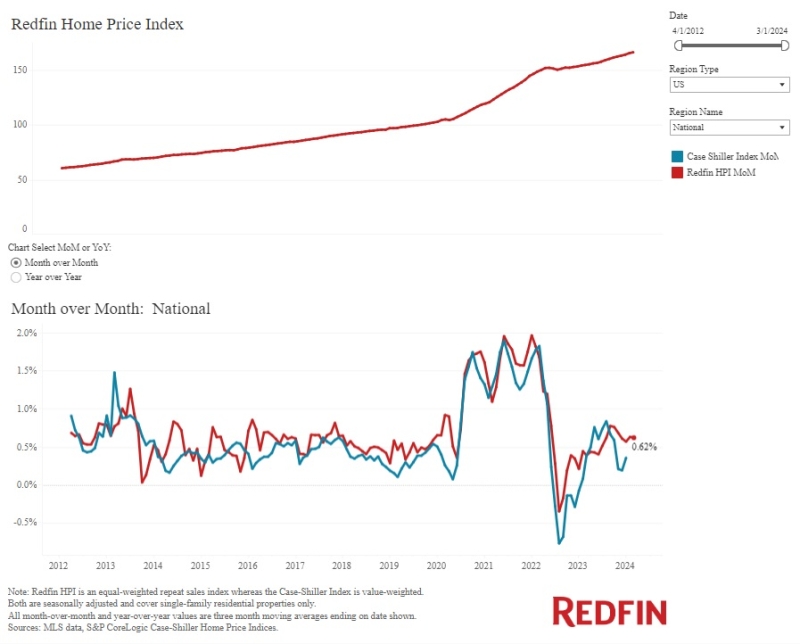Advertisement
Q1 Delinquency Rate Hits Lowest Point in Seven Years

The delinquency rate for mortgage loans on one- to-four-unit residential properties decreased to a seasonally adjusted rate of 6.11 percent of all loans outstanding at the end of the first quarter of 2014, the lowest level since the fourth quarter of 2007. The delinquency rate decreased 28 basis points from the previous quarter, and 114 basis points from one year ago, according to the Mortgage Bankers Association’s (MBA) National Delinquency Survey.
The delinquency rate includes loans that are at least one payment past due but does not include loans in the process of foreclosure. The percentage of loans in the foreclosure process at the end of the first quarter was 2.65 percent, down 21 basis points from the fourth quarter and 90 basis points lower than one year ago. This was the lowest foreclosure inventory rate seen since the first quarter of 2008.
The percentage of loans on which foreclosure actions were started during the first quarter fell to 0.45 percent from 0.54 percent, a decrease of nine basis points, and the lowest level since the second quarter of 2006.
The serious delinquency rate, the percentage of loans that are 90 days or more past due or in the process of foreclosure, was 5.04 percent, a decrease of 37 basis points from last quarter, and a decrease of 135 basis points from the fourth quarter of last year. Similar to the previous quarter, 75 percent of seriously delinquent loans were originated in 2007 and earlier, with another 20 percent originated between 2008 and 2010. Loans originated in 2011 and later only accounted for five percent of all seriously delinquent loans.
“We are seeing sustained and significant improvement in overall mortgage performance,” said Mike Fratantoni, MBA’s chief economist. “A more stable and stronger job market, coupled with strong credit standards on new loans, has kept delinquency rates on recent vintages low, while the portfolio of loans made pre-crisis is steadily being resolved. Increasing home prices, caused by tight inventories of homes for sale, have helped build an equity cushion for many new borrowers and have helped some homeowners who had been underwater regain positive equity in their properties. The increase in values also helps to facilitate sales of distressed properties, which may further expedite the pace of resolution of pre-crisis loans.”
“Mortgage delinquencies typically decline in the first quarter. However, the declines this quarter were on both a seasonally adjusted and year-over-year basis. The delinquency rate decreased for the fourth straight quarter, foreclosure starts have declined for five of the last six quarters, and the percentage of loans in foreclosure has decreased for eight straight quarters.
“The rate of new foreclosures started, which captures the flow of loans that enter the foreclosure process, is now at 0.45 percent, which matches the long run average. The 30-day delinquency rate, an early indicator of potential mortgage performance problems, is below the historical average. This measure is usually highly correlated to the employment situation and it follows the recent health in labor markets that 30-day delinquencies are decreasing.
“In the past, we have cautioned that national improvements may not always translate into state or local market improvement. This quarter, however, only four states had an increase in the rate of new foreclosures started, while only one state had an increase in loans in foreclosure.
“Judicial states continue to account for the majority of loans in foreclosure, making up almost 70 percent of loans in foreclosure, while only representing about 40 percent of loans serviced. Of the 17 states that had a higher foreclosure inventory rate than the national average, 15 of those were judicial states. While the percentages of loans in foreclosure dropped in both judicial and non-judicial states, the average rate for judicial states was 4.6 percent compared to the average rate of 1.4 percent for non-judicial states.
“New Jersey, a state with a judicial foreclosure system, was the only state in the nation to see an increase in loans in foreclosure over the previous quarter and now has the highest percentage of loans in foreclosure in the nation with eight percent of its loans in the foreclosure process. New Jersey also had the highest percentage of new foreclosures started in the first quarter of 2014, but also had a significant drop in its loans that were 90+ days delinquent, a sign that a large portion of loans previously held in the 90+ day delinquency category entered the foreclosure process during the quarter.
“The aggregate foreclosure and delinquency measures for the top 25 metro areas in the US all declined in the first quarter. The Miami and Tampa metro areas continue to have the highest percent of loans in foreclosure, but along with Chicago, Miami and Tampa also had the biggest improvements in loans in foreclosure over the year. In terms of new foreclosures started, only the Baltimore metro area had an increase over the first quarter of 2013. The largest decreases in foreclosure starts were in Miami, Atlanta, and Tampa. In terms of 90+ day delinquencies and loans in foreclosure, all 25 metro areas showed improvement over the past year.”
Change from last quarter (fourth quarter of 2013)
On a seasonally adjusted basis, the overall delinquency rate decreased for all loan types, except for prime fixed loans and VA loans. The seasonally adjusted delinquency rate increased six basis points to 3.29 percent for prime fixed loans and decreased 36 basis points to 5.08 percent for prime ARM loans. For subprime loans, the delinquency rate decreased 72 basis points to 18.80 percent for subprime fixed loans and 71 basis points to 21.62 percent for subprime ARM loans. The delinquency rates for VA loans rose by 12 basis points to 5.41 percent and the FHA delinquency rate fell by 65 basis points to 9.82 percent.
The non-seasonally adjusted percentage of loans in foreclosure, also known as the foreclosure inventory rate, decreased from last quarter to 2.65 percent. The foreclosure inventory rate for prime fixed loans decreased ten basis points to 1.46 percent and the rate for prime ARM loans decreased 32 basis points from last quarter to 3.53 percent. For subprime loans, the rate for subprime fixed loans decreased 21 basis points to 8.07 percent and the rate for subprime ARM loans decreased 40 basis points to 15.08 percent. The foreclosure inventory rate for FHA loans decreased 27 basis points to 3.00 while the rate for VA loans decreased ten basis points to 1.68 percent.
The non-seasonally adjusted foreclosure starts rate decreased four basis points for prime fixed loans to 0.26 percent, 11 basis points for prime ARM loans to 0.48 percent, 30 basis points for subprime fixed to 1.17 percent, 33 basis points for subprime ARM loans to 1.58 percent, 11 basis points for FHA loans to 0.64 percent, and four basis points for VA loans to 0.39 percent.
Change from last year (first quarter of 2013)
Given the challenges in interpreting the true seasonal effects in these data when comparing quarter to quarter changes, it is important to highlight the year-over-year changes of the non-seasonally adjusted results.
Compared with the first quarter of 2013, the foreclosure inventory rate decreased 52 basis points for prime fixed loans, 242 basis points for prime ARM loans, 67 basis points for subprime fixed, 119 basis points for subprime ARM loans, 96 basis points for FHA loans, and 30 basis points for VA loans.
Over the past year, the non-seasonally adjusted foreclosure starts rate decreased 12 basis points for prime fixed loans, 46 basis points for prime ARM loans, 55 basis points for subprime fixed, 73 basis points for subprime ARM loans, 30 basis points for FHA loans, and ten basis points for VA loans.
About the author





